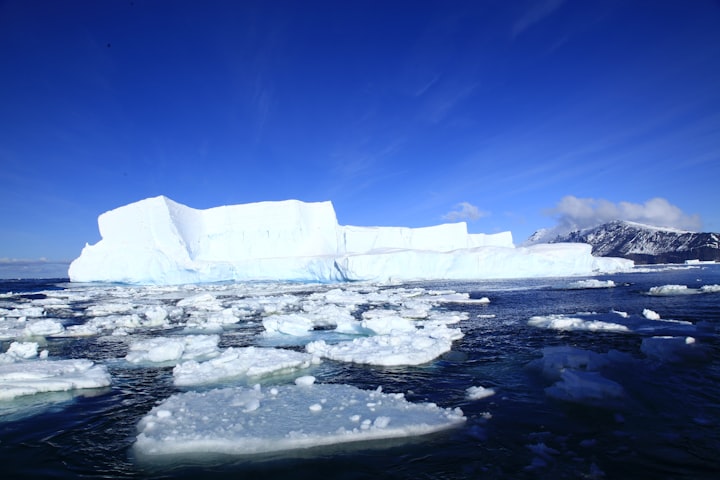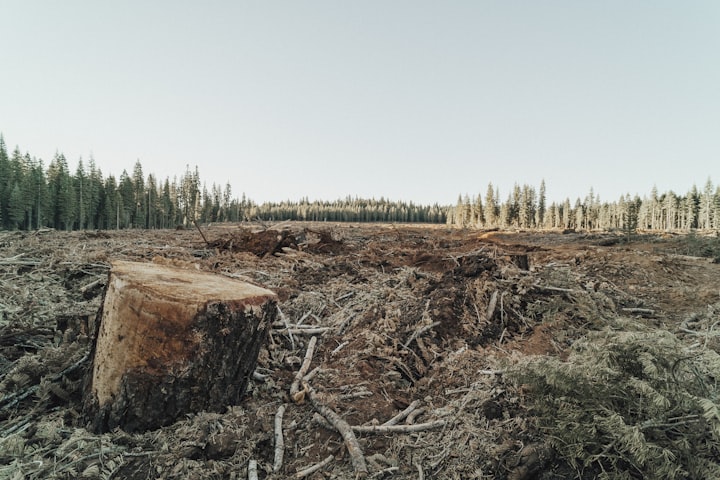The Vanishing Glacier
Set your story on a mountain where a once-majestic glacier is disappearing. Capture the emotions of a local community that relies on glacial meltwater for their livelihoods and the challenges they face as their water source dwindles.

High in the Himalayas, nestled in the shadow of the mighty Kanchenjunga, lay the remote village of Chomrong. For generations, this picturesque village had thrived thanks to the presence of the great Thuli Glacier, which had provided a steady source of meltwater to sustain the villagers' lives and livelihoods. But now, the glacier was fading away, and the dreams of Chomrong were slowly evaporating with it.
Namaste, a weathered elder of Chomrong, remembered a time when the Thuli Glacier had been a majestic sight, gleaming in the sunlight. It had been the lifeblood of their community, supplying water for drinking, irrigation, and the health of their livestock. The glacier had symbolized their resilience and had been an integral part of their identity.
As the years passed, Namaste, like others in Chomrong, noticed the changes. The glacier was receding, leaving behind a barren, rocky landscape. The once-gurgling streams had become a trickle, and the villagers faced water shortages, failed crops, and dwindling pastures for their animals.
The emotions in Chomrong ran deep. Frustration simmered as they watched their crops wither and their livestock grow weak. Anger flared as they saw the impacts of climate change taking a toll on their once-thriving community. Desperation was a constant companion as they witnessed the glacier's relentless retreat.
Tashi, a young farmer, had always dreamed of a bountiful harvest and a better life for his family. But the changing climate had dashed his hopes. Each year, the planting season grew more unpredictable, and water scarcity became a harsh reality. Tashi's heart ached as he saw his parents struggle to make ends meet, and his own children's dreams of a brighter future fade like the vanishing glacier.
One day, Tashi decided he could no longer stand by. He joined a group of like-minded villagers who were determined to find a solution. They embarked on a perilous journey to the glacier's edge, hoping to understand the forces at play and to raise awareness about the urgent need for action.
As they stood before the glacier's snout, the sight was both breathtaking and heartbreaking. The towering ice wall had receded far beyond what anyone could have imagined. Tashi and his companions felt a deep sense of loss, like saying farewell to an old friend.
Their journey became a symbol of Chomrong's resilience and determination. They returned home, organizing community meetings and workshops on sustainable agriculture and water conservation. They embraced new technologies, such as rainwater harvesting, to adapt to the changing climate.
Their actions attracted attention from organizations and scientists who recognized the plight of Chomrong and offered support. Together, they initiated projects to restore the glacier's health by reducing carbon emissions and promoting sustainable practices in the region.
Years passed, and Chomrong's transformation was slow but steady. The glacier was still a shadow of its former self, but the village had found a way to survive and even thrive amidst adversity. Tashi's heart swelled with pride as he saw the resilience of his community and the potential for a brighter future.
The story of Chomrong was a poignant reminder of the emotional toll of climate change and the power of community and determination in the face of environmental adversity. The vanishing glacier had been a wake-up call, but it had also been a catalyst for change—a testament to the human spirit's ability to adapt, endure, and hope for a better tomorrow.
Reducing the melting of glaciers requires addressing the root causes of global warming and climate change, which are primarily driven by human activities. Here are several actions and strategies that can help mitigate glacier melt:
Reduce Greenhouse Gas Emissions: The most significant factor contributing to global warming is the emission of greenhouse gases, such as carbon dioxide (CO2), methane (CH4), and nitrous oxide (N2O). To slow glacier melt, we must reduce these emissions. This can be achieved by transitioning to cleaner energy sources, improving energy efficiency, and implementing policies to limit emissions from industries, transportation, and agriculture.
Promote Renewable Energy: Encourage the use of renewable energy sources like solar, wind, and hydropower. These sources generate electricity without producing greenhouse gas emissions, helping to reduce our reliance on fossil fuels.
Energy Efficiency: Implement energy-efficient practices in homes, businesses, and industries. This includes using energy-efficient appliances, improving insulation, and adopting energy-saving technologies.
Sustainable Transportation: Reduce the carbon footprint of transportation by using public transit, carpooling, biking, and walking. Transition to electric or hybrid vehicles and support the development of electric vehicle charging infrastructure.
Protect Forests: Forests act as carbon sinks, absorbing CO2 from the atmosphere. Forest conservation and reforestation efforts can help mitigate greenhouse gas emissions.
Limit Air Travel: Air travel contributes to CO2 emissions. Whenever possible, choose alternatives like train travel for shorter distances and consider the environmental impact when planning trips.
Reduce Waste: Reduce, reuse, and recycle to minimize the production of greenhouse gases associated with the manufacturing and disposal of products.
Advocate for Climate Policies: Support and advocate for climate policies and international agreements aimed at reducing emissions and slowing global warming.
Sustainable Agriculture: Implement sustainable agricultural practices that reduce emissions, improve soil health, and reduce deforestation.
Raise Awareness: Educate yourself and others about the importance of reducing emissions and mitigating climate change. Encourage climate-friendly behaviors and practices in your community.
Support Climate Research: Support research on climate change, including glacier monitoring and climate modeling, to better understand the dynamics of glacier melt and its impacts.
Water Conservation: Reduce water waste in your daily life. Conserving water can help maintain glacier-fed rivers and their ecosystems.
Glacier Protection: Advocate for the protection of glacier environments and their surrounding ecosystems. These areas are particularly vulnerable to climate change, and conservation efforts can help preserve them.
Local Initiatives: Get involved in local climate action initiatives, such as tree planting, clean energy projects, and climate education programs.
Reduce Black Carbon: Black carbon, or soot, is a potent contributor to glacier melt. Supporting policies that reduce black carbon emissions from sources like diesel engines and open burning can have a significant impact.
Reducing glacier melt is a global challenge that requires coordinated efforts at the local, national, and international levels. By taking individual actions and supporting broader climate mitigation efforts, we can work toward slowing the rate of glacier loss and preserving these vital natural resources for future generations.
Continued melting of glaciers has significant consequences, many of which are already being observed and will intensify if the trend continues. Here are some of the consequences we can face:
Sea Level Rise: One of the most immediate and visible consequences of glacier melt is sea level rise. As glaciers melt, the additional water flows into the oceans, causing sea levels to rise. This can lead to coastal erosion, increased flooding, and the displacement of coastal communities.
Loss of Freshwater Resources: Glaciers are vital sources of freshwater for millions of people around the world. As glaciers melt, the availability of freshwater for drinking, irrigation, and hydropower generation decreases, potentially leading to water scarcity and conflicts over water resources.
Impact on Ecosystems: Glacier melt affects the ecosystems downstream that rely on glacial meltwater. Changes in water availability and temperature can disrupt aquatic habitats, threaten fish populations, and alter the structure of ecosystems.
Increased Flooding and Landslides: Glacial meltwater can lead to increased river flow and the potential for flooding in areas downstream. Additionally, the weakening of glacial ice can make slopes more unstable, increasing the risk of landslides.
Changes in Weather Patterns: The loss of glaciers can disrupt local and regional weather patterns. Glaciers act as natural cooling systems, and their disappearance can lead to increased temperatures and altered precipitation patterns in the surrounding areas.
Rising Temperatures: Glacial ice reflects sunlight, helping to cool the Earth's surface. As glaciers melt, they expose darker surfaces like rock and water, which absorb more heat, leading to further warming.
Impact on Agriculture: Glacier meltwater is essential for irrigation in many agricultural regions. Reduced water availability can lead to decreased crop yields and food insecurity.
Loss of Biodiversity: Glacial ecosystems are unique and support specialized species. The loss of glaciers can lead to the extinction of these species and disrupt ecosystems that rely on glacial meltwater.
Displacement of Communities: Rising sea levels and water scarcity can force communities living in coastal and glacial areas to relocate, leading to climate-induced displacement and potential conflicts over resources.
Economic Impacts: Glacier melt can have significant economic consequences. Loss of tourism revenue from disappearing glaciers, damage to infrastructure from flooding, and increased costs associated with adapting to changing conditions all contribute to economic challenges.
Geopolitical Tensions: Competition over dwindling water resources and the impacts of climate-induced displacement can exacerbate geopolitical tensions in regions heavily affected by glacier melt.
Accelerated Glacier Retreat: As glaciers melt and lose mass, they may retreat faster, creating a feedback loop that accelerates the rate of global sea level rise and other associated impacts.
It's crucial to recognize that the consequences of glacier melt are interconnected and have far-reaching effects on both natural systems and human societies. Slowing glacier melt requires immediate and sustained efforts to mitigate climate change, reduce greenhouse gas emissions, and adapt to the changes that are already occurring.
About the Creator
Julian Evans
1.knowledge and learning 2.Empathy and understanding
3.personal enjoyment






Comments
There are no comments for this story
Be the first to respond and start the conversation.